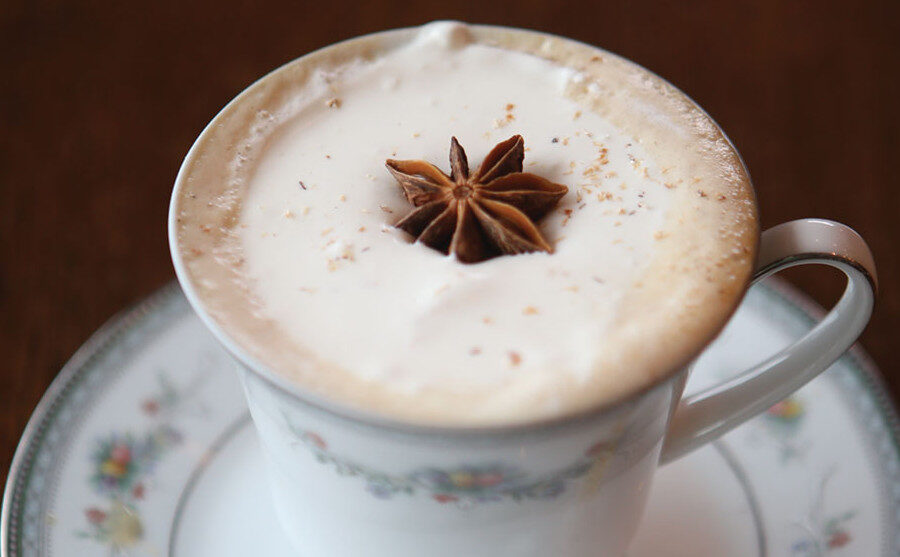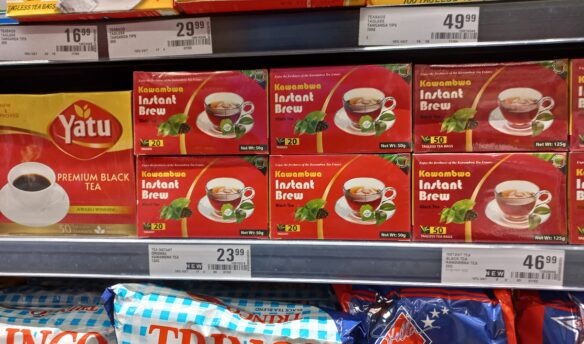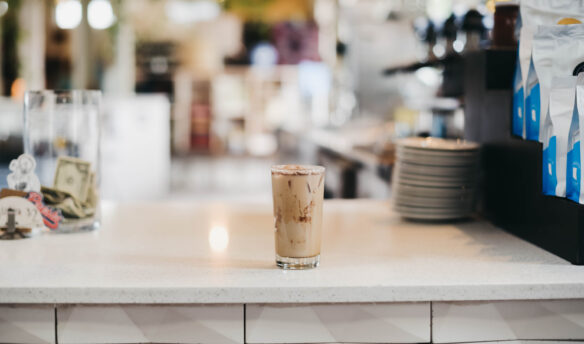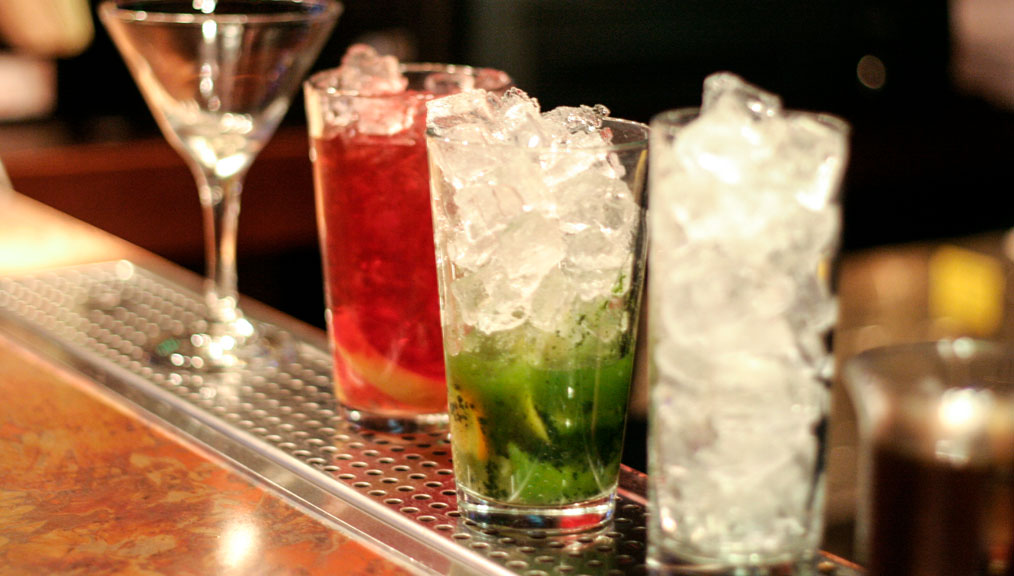[A] gin and tonic is a classic drink that’s as straightforward as it gets: gin, tonic water, and lime juice. The lime and the tonic bring out the notes of juniper and other botanicals in the gin. If bartenders want to improve the drink, they will most often simply use artisanal gins, which feature more or different botanicals, or perhaps they’ll add a few drops of bitters or a tincture (a one-note bitter) to accentuate the juniper or lime.
Still, whether you add bitters or use a better quality gin, the drink still tastes basically the same. Not so when you add tea to the mix. At Eat Street Social in Minneapolis, mixologists Nick Kosevich and Ira Koplowitz add tea to a G ’n’ T and transform it to a T ’n’ T. “We’ve used a green apple fig tea, chai tea, smoked Earl Grey tea, and sugarplum tea,” says Kosevich. He and Koplowitz own Bittercube, an artisan bitters maker and mixology consulting company.
“Adding tea to a cocktail program opens up so many doors to different flavor profiles,” Kosevich says. “We’ve been using teas for a long time at Bittercube. It’s really a simple way of changing the flavor profile of your drinks. You can make the same cocktail 100 different ways by using different teas.”
Teas, like wines, have complex aromas and these completely alter a drink. In the case of the T ’n’ T, the different teas push forward different flavors and aromas in the gin. In a sense, adding different teas to a cocktail is like adding different spices to a cookie—the same recipe, except for one variation, creates a distinct flavor. A cookie laced with lemongrass has citrus notes, but it becomes a spiced delight if you add cinnamon.
“Putting tea in cocktails used to not be that big of a deal,” says Katie Potter as she steeps and mixes behind the bar of her tea, brunch, and cocktail house, The Hazel Room, in Portland. She ticks off a short list of tea-based cocktails: hot toddy, pirate’s tea, tea and sympathy, and she could go on and on. Historically, tea cocktails were made hot with black tea, the only tea option. Potter’s concoctions are based on older cocktails but show the advance of US tea culture with chai and herbaceous toddies and a tea and sympathy with Yunnan hong cha.
“There’s this wonderful, blossoming effect of tea in the United States,” says Julie Matson, owner of Bingleys Teas. “Cocktails can get a little tired. Tea brings this exotic element to a cocktail and it really plays well with liqueurs, with gins, and with vodkas.”
Adding tea to a cocktail also doesn’t require a lot explanation for customers, says Matt Tunnell, the tasting room mixologist at Great Lakes Distillery. “People already have their head around a whiskey sour as a cocktail, and they already understand what tea is so a whiskey sour made with some tea is something they will understand,” Tunnell says, explaining that he adds Rishi’s coconut oolong tea leaves into the shaker to bring out the coconut notes in the distillery’s Kinnickinnic whiskey to create a coconutty whiskey sour.
There’s no expensive equipment or intensive training necessary for a bartending staff, either, says Tunnell. “All you need is a fine mesh strainer.”
Tea is mixed into cocktails in one of four ways: brewed and poured straight to a hot toddy or an iced tea cocktail; turned into ice cubes for a cocktail; infused into the liquor; or brewed and reduced into a sugar-tea syrup.
If you’re brewing hot tea for a cocktail, make sure the tea is more concentrated than for a plain cup of tea. Kosevich advises using only one and a half ounces of spirits instead of the typical two ounces for a drink. “Because it’s hot, the alcohol will evaporate so you use less spirit than in a chilled cocktail,” he says. As alcohol evaporates, it makes a drink smell and taste more boozy.
“With iced tea cocktails, an easy way to add tea is to mix matcha powder with lemonade and a spirit like vodka or gin,” Tunnel says. “The nice thing about matcha is it’s already ground up and ready to go, so you can do some really interesting stuff with it,” Tunnell says. Tea-flavored lemonades don’t even need alcohol to make an exotic summer drink, he adds.
Tea ice cubes can add a nice touch to a cocktail. A hibiscus rooibos, for example, makes stunning ice cubes for a sangria, says Jeffrey Champeau from Rishi Tea. “It adds this vivid, bright red color,” he says. ”And as it melts, it adds more flavor and complexity to the drink.” Sticking with low-alcohol drinks, Champeau also mulls tea with cider and wine, even adding it to wassail spice mélanges.
Tea infusions and syrups take a bit more cocktail know-how, but they provide unique touches, Kosevich says. To make an infusion, you simply steep tea leaves directly in a spirit. “One of the reasons tea works so well is because the extraction process happens very quickly,” Kosevich says.
For a 750-mililiter bottle, you might measure two to four tablespoons of tea and let it steep in the spirit between fifteen to thirty minutes. (Potter, from The Hazel Room, steeps hers for hours or even days depending on the tea.) Strain out the tea leaves, and you have a tea-infused spirit. “If you’re doing a citrus or botanical infusion, it can take a few days or weeks whereas the tea infusion happens a lot faster,” Kosevich says. “The exact amounts of tea and time for infusing do not have an exact rule. The main concern is to discard the tea leaves through a coffee filter to remove even the smallest particles, otherwise, the tea will continue to infuse the spirit, and that can add bitterness.”
Many classic cocktails have a three-part recipe—spirit, citrus juice, and simple syrup, which is equal parts water and sugar. For a gimlet, it’s either vodka or gin and lime juice; for a daiquiri, it’s rum and lime juice; and for a whiskey sour, it’s whiskey and lemon juice. All then add simple syrup. Instead of using plain water, making the syrup with tea provides another level of complexity to a cocktail. The drink changes as the aromas and nuances of the tea bring out different notes in the spirits. A lapsang souchong elicits notes of smoke; jasmine tea brings floral aromas to the forefront; and an herbal tisane accentuates the botanicals of a spirit. “By using different teas and either infusing them in the simple syrups or the spirits, those simple cocktails now have complex flavors, and they’re going to taste wildly different,” Kosevich says.
Tea-based cocktails can be added to a café menu, or they can simply be incorporated as recipe cards and suggestions for tea patrons. Tea-infused simple syrups can be mixed into non-alcoholic drinks. “There’s no reason why non-alcoholic drinks like Italian sodas can’t be jazzed up with homemade syrups made from tea,” says Matson. “And syrups really are so easy to make. I’ve even used tea syrups to flavor desserts. I recently boiled down some honey with ginseng oolong, and I spooned a little bit of that syrup over a pumpkin ginger tart I had made. The pumpkin tart was beautiful on its own, but the syrup gave this extra elegant moment to that dessert.”
For café owners, if you don’t have a liquor license for your establishment, that’s the first requirement when bringing tea cocktails to your menu. Depending on your location, the costs and regulations alone could determine the benefit of adding alcohol to your menu.
The second concern is marketing that you offer cocktails, tea or otherwise. “We’ve been open for nineteen and a half years, and we’ve served alcohol for seventeen of those years,” says Melissa Honkamp, owner of Rochambo Tea House in Milwaukee. “I still have people who have been customers for two or three years suddenly look up at the menu and say, ‘Oh, I never knew you served alcohol.’”
Before you start serving drinks, Honkamp suggests studying the market for tea and other cocktails, and then looking into the marketing required for such a program in your café. “The nice thing, if you are a tea or coffeehouse, is that the cocktails you’re going to come up with are going to be unique,” she says. “Nobody’s going to be able to replicate your drinks because they might not be able to get your special tea blend.”
Almost any liqueur or spirit can work with tea, but vodka and gin tend to be the most popular, followed by rum and whiskey. Champagne and tea also pair nicely. Linda Appel Lipsius, owner of Teatulia, served a green tea and champagne cocktail at a pre-show Grammy party. “My favorite thing about tea cocktails is we really are on this mission to get people to look at tea in a different way,” Lipsius says. “Cocktails get people to look at tea twice and say ‘Wow. It never occurred to me that tea is something I’d have on a big night out.’ For tea shops and coffee shops looking to do cocktails, there’s nothing but an upside to it.”
—Jeanette Hurt is a food and travel writer, and author of five books.

















